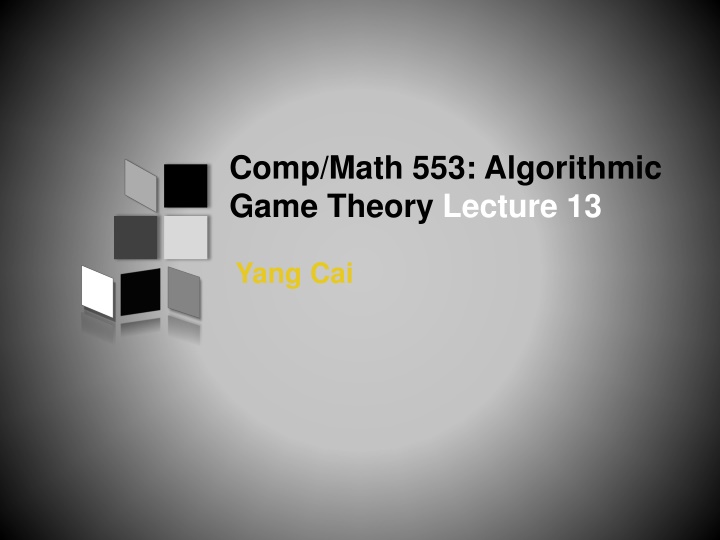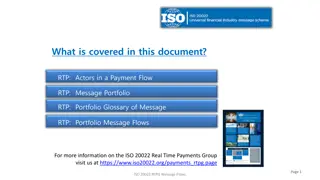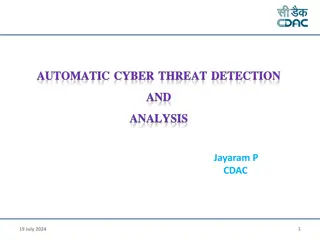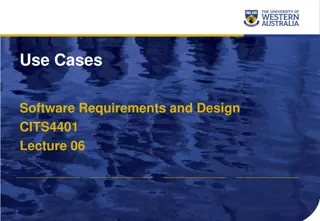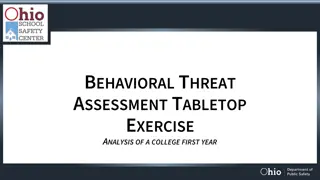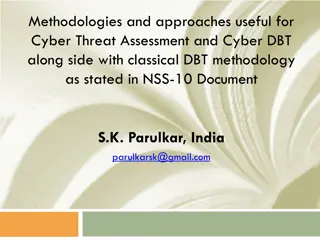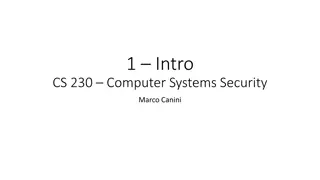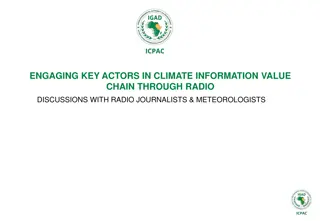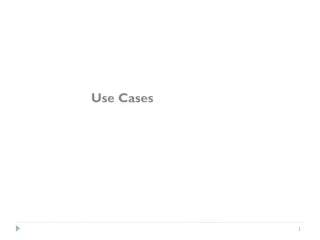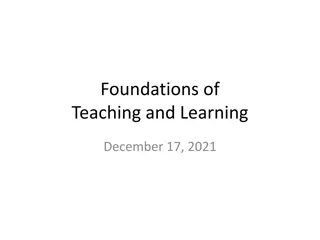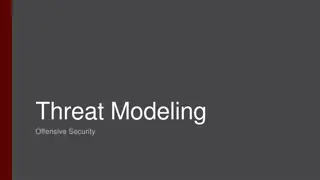Requirements for Computer Protection and Threat Actors Overview
Identifying types of attackers, describing defense principles, explaining importance of information security in preventing data theft, thwarting identity theft, and understanding threat actors like script kiddies who lack technical skills but use hacking tools. Financial cybercrime, motivations, and categories are also discussed.
Download Presentation

Please find below an Image/Link to download the presentation.
The content on the website is provided AS IS for your information and personal use only. It may not be sold, licensed, or shared on other websites without obtaining consent from the author.If you encounter any issues during the download, it is possible that the publisher has removed the file from their server.
You are allowed to download the files provided on this website for personal or commercial use, subject to the condition that they are used lawfully. All files are the property of their respective owners.
The content on the website is provided AS IS for your information and personal use only. It may not be sold, licensed, or shared on other websites without obtaining consent from the author.
E N D
Presentation Transcript
Comp/Math 553: Algorithmic Game Theory Lecture 13 Yang Cai
Menu Recap: Virutal Welfare = Revenue Myerson s Optimal Auction Prophet Inequalities
Revenue-Optimal Auctions [Myerson 81 ] Bayesian Single-dimensional settings. Exists Revenue-Optimal auction that is simple direct DSIC Optimality:The expected revenue of Myerson s auction when all bidders report truthfully (which is in their best interest to do since the auction is DSIC) is as large as the expected revenue of any other (potentially indirect) interim IR auction, when bidders use Bayesian Nash equilibrium strategies.
Revenue = Virtual Welfare [Myerson 81] Fix a Bayesian single-dimensional environment, where bidder distributions are F1, ,Fn, and F=F1x xFn. Let also (x,p) be a BIC mechanism satisfying interim IR and NPT. The expected revenue of this mechanism under truth-telling is Ev~F[ i pi(v)]=Ev~F[ i xi(v) i (vi)], where i (vi) := vi- (1-Fi(vi))/fi(vi) is bidder i s virtual value function (fi is the density function for Fi).
One U[0,1] Bidder, One Item Recall that posting a price of achieves expected revenue . Is the optimal expected revenue of any IR auction? Answer: yes, it is! Proof: The virtual transform for U[0,1] distribution is: By Myerson s theorem, any BIC, IR, NPT mechanism (x,p) has revenue . Notice that for all possible x(): Hence, posting a price of is optimal as it achieves the best possible expected virtual welfare, and hence expected revenue.
Two U[0,1] Bidders, One Item Recall that Vickrey without reserve has expected revenue , while Vickrey with reserve has expected revenue 5/12. Is 5/12 the optimal expected revenue of any interim IR auction? Answer: yes it is!
Two U[0,1] Bidders, One Item (cont.) Recall that the virtual transform for v~U[0,1] is: (v)= 2v-1 By Myerson s theorem, Optimizing expected revenue = Optimizing expected virtual welfare subject to interim monotonicity (needed for BIC) Let s try to optimize virtual welfare point-wise on every bid profile (forgetting about interim monotonicity temporarily) On bid profile (v1,v2), the pair of virtual values are ( (v1), (v2))=(2v1-1, 2v2-1). How should we allocate? If max{v1,v2} , let s give the item to the bidder with highest value/virtual value. Otherwise, (v1), (v2) < 0. So let s not allocate the item. Note that the above allocation rule is monotone, so by Myerson s lemma there is a price rule that makes it DSIC. DSIC + pointwise optimal virtual welfare => DSIC, Revenue-optimal Now, notice that the above auction is identical to Vickrey auction with reserve (which has revenue 5/12 and is actually DSIC).
Myersons Optimal Auction
Revenue-optimal Single-Dimensional Auction By revelation principle, instead of optimizing over all (potentially indirect) interim IR auctions, can optimize over direct interim IR, BIC auctions. In fact, can also assume interim NPT, as if interim NPT is not satisfied expected revenue can be increased by turning it interim NPT. Hence, by Myerson s theorem suffices to find the interim monotone allocation rule that optimizes expected virtual welfare. Let s ignore interim monotonicity temporarily. What allocation rule optimizes expected virtual welfare? Answer: Optimize virtual welfare pointwise, i.e. on every bid profile v. i.e. on bid profile v solve: max i xi i (vi), s.t x X Call this allocation rule the Virtual Welfare-Maximizing Rule.
Revenue-optimal Single-Dimensional Auction Pertinent Question: Is the Virtual Welfare-Maximizing Rule monotone? If yes, done! And, in fact, with a DSIC mechanism But answer depends on the distribution: e.g. suppose one item is sold to one bidder whose value is U[0,1] + U[1,3]; then virtual welfare-maximizing rule is not monotone Distributions resulting in monotone allocation rules?
Regular Distributions Definition 1 (Regular Distributions): A single-dimensional distribution F is regular if its virtual transform v- (1-F(v))/f(v) is non-decreasing. Definition 2 (Monotone Hazard Rate (MHR)): A single-dimensional distribution F has Monotone Hazard Rate, if (1-F(v))/f(v) is non-increasing. What distributions are in these classes? - MHR: uniform, exponential and Gaussian distributions, and many more. Regular: MHR and Power-law (pdf =?? ?) - - Irregular: Multi-modal or distributions with very heavy tails. When all the Fi s are regular, the Virtual Welfare-Maximizing Rule is monotone.
Optimal Auction for Regular Distributions [Myerson 81] Fix a Bayesian single-dimensional environment, where all bidders draw values from regular distributions. Then the auction whose allocation rule is the virtual welfare maximizing allocation rule (and whose price rule is uniquely determined by the allocation rule so that the resulting auction is interim IR, NPT) is DSIC and revenue-optimal (among all interim IR, potentially indirect auctions).
Discussion about Myerson s Auction
How Simple is Myersons Auction? Single-item setting, w/ regular i.i.d. bidders, i.e. F1=F2=...=Fn: All i( ) s are the same and monotone. the highest bidder has the highest virtual value the optimal auction is the Vickrey auction with reserve price -1(0). Killer application: eBay (assuming the starting prices are chosen well...)
How Simple is Myersons Auction? Single-item setting, w/ regular independent bidders, but F1 F2 ... Fn All i( ) s are monotone, but are not the same. e.g. 2 bidders, v1 uniform in [0,1]. v2 uniform in [0,100]. - 1(v1) = 2v1-1, 2(v2) = 2v2-100 - Optimal Auction: When v1 > , v2 < 50, allocate to 1 & charge . When v1 < , v2 > 50, allocate to 2 & charge 50. When 0 < 2v1 -1 < 2v2 100, allocate to 2 & charge: (99+2v1 )/2, a tiny bit above 50 When 0 < 2v2 -100 < 2v1 -1, allocate to 1 & charge: (2v2 -99)/2, a tiny bit above .
How Simple is Myersons Auction? In non-i.i.d. single-dimensional settings, Myerson s auction is hard to explain to someone who hasn t studied virtual valuations. Weirdness of auction is inevitable if you are 100% confident in your model (i.e., the Fi s) and you want every last cent of the maximum- possible expected revenue. Alternatives to Myerson s Auction? Are there simpler, more practical, and more robust auctions than the theoretically optimal auction? Optimality requires complexity, thus we ll only look for approximately optimal solutions.
Optimal Stopping Rules Consider the following game: there are n stages in stage i, you are offered a nonnegative prize i, drawn from some distribution Gi you are given the distributions G1, . . . , Gnbefore the game begins, and told that the prizes are drawn independently from these distributions but each i is revealed at the beginning of stage i. after seeing i, you can either accept the prize and end the game, or discard the prize and proceed to the next stage. Question: Is there a strategy for playing the game, whose expected reward competes with that of a prophet who knows all realized i s and picks the largest? The difficulty in answering this question stems from the trade-off between the risk of accepting a reasonable prize and missing out on a better one later vs the risk of having to settle for a lousy prize in one of the final stages.
Prophet Inequality Prophet Inequality [Krengel-Sucheston-Garling 79]: There exists a strategy guaranteeing: expected payoff 1/2 E[maxi i]. In fact, a threshold strategy suffices. - Proof: On board; proof by Samuel-Cahn 1984. - Remark: Our lower-bound only credits units of value when more than one prize is above . This means that factor of applies even if, whenever there are multiple prizes above the threshold, the strategy picks the smallest one.
